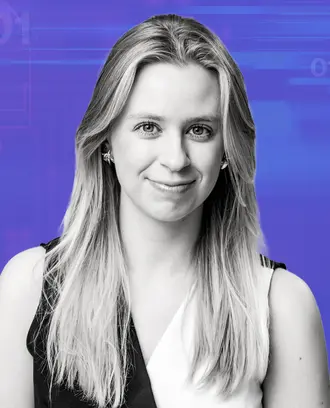Credit: brulove / Shutterstock
Taylor Swift uses voice memos while writing her next hit. Twitter CEO Jack Dorsey is worth $14 billion but uses a note-taking app that comes installed for free on Apple products. Richard Branson, founder of the Virgin Group, always keeps a pen and notebook close, as does Spanx founder and billionaire Sara Blakely.
Whether it’s digital or analog, a unifying practice among some of today’s most creative and successful minds is a reliable, routine way of keeping track of ideas.
In the My Idea Made to Matter series, we ask creators and leaders about how they develop and work with ideas, and how they keep track of them. Here’s a look at how eight of them use old school methods, the latest digital tools — or both — to keep an eye on their ideas.
Smartphones and email drafts
Swedish furniture company IKEA is known for its creatively convenient and minimalist designs — and complicated instruction manuals — but Mikkel Christopher’s way of keeping track of ideas is not nearly as streamlined.
The lead creative producer at SPACE10, an independent research and design lab that supports IKEA, Christopher said he gets ideas at random times, often when he doesn’t need them.
“I usually just write them down on my phone,” Christopher said. “I wish I could say I had a way of structuring these notes, but to be honest it’s one big mess. I quite like that it’s not super structured or in a fancy app. It should be kept as a random messy back-catalog of thoughts, reflections, and everyday epiphanies.”
Unsurprisingly, teenage YouTube tech reviewer Jacklyn Dallas also uses her phone to keep track of her ideas. Dallas, who has about 162,000 subscribers and more than 10 million views, said she uses a note-taking app called Google Keep.
“Whenever I have a new video idea I add it to the list,” she said. “The app keeps everything organized, and I always try to have an inventory of ideas so when I have a free second I can work on one of them.”
Krishna Gupta, SB ’09, and founder of Romulus Capital (now Remus Capital) admits his running list of ideas is usually in a Gmail draft.
“Not particularly sophisticated!” he said.
Sticky notes
Shalanda Baker acknowledges her method for keeping track of ideas sounds “really messy,” but it works for her.
Baker is the first-ever deputy director of energy justice at the U.S. Department of Energy, and is also the author of “Revolutionary Power: An Activist’s Guide to the Energy Transition,” a former professor of law and public policy at Northeastern University, and co-founder of the Initiative for Energy Justice.
“I keep track of new ideas on sticky notes on my desk, and I just have them out and sometimes will need to refer to them — and I’m like, ‘Oh, yes. I had that flash of brilliance!’ I track them on small pieces of paper,” she said.
Whiteboards, apps, and bits of paper
Kerry Bowie, SB ’94, MBA ’06, used to be a Post-It man, but said he’s tried to cut back on his paper usage in an effort to be more sustainable.
“I have a glass whiteboard to my left. I’m starting to use Trello a lot more digitally and have used Asana in the past,” said Bowie, founder of Browning the Green Space.
“However, every now and again I take an 8.5 x 11 sheet of paper, and I fold and fold, and make it fours,” Bowie said. “I hate to say this because I’m trying to go paperless as much as possible, but I’m counting, and I’ve got at least 25 of them right here in front of me, and I just try to go through them and I rip them apart.”
Before the COVID-19 pandemic, Yancan “Lydia” Li took notes and created lists on yellow legal pads or whiteboards. But since she and her colleagues at Generate Capital started working from home, Li, MBA ’19, said she’s switched to digital tools that allow for easier remote collaboration.
“The process of writing down lists or drawing a chart really helps me think through complicated problems,” Li said. “I enjoy using OneNote, and recently discovered miro, which is an online whiteboarding tool.”
At Blendoor, which matches employers with diverse talent through anonymized profiles, employees use a variety of document management, project management, and note-taking tools, according to founder and CEO Stephanie Lampkin, MBA ’13.
“I try to record as much as possible,” she said. “I'm also a pencil and paper person.”
George Chu, senior vice president of finance and business analytics at City Year, said he also tries to document as much as possible to not lose any passing ideas that he can’t think about in the moment.
“I’ve evolved to a solution where I have a simple ‘idea’ Google form on my phone. When inspiration hits, I jot it in the form, which dumps it into a spreadsheet in the cloud,” Chu said. “Periodically I’ll print it out on separate bits of paper and stick them in a jar. Now and again I pull a bunch out and read. It’s pretty hilarious because they fall in three categories: 1) Hey good idea, will follow up; 2) Wow, stupid. What was I thinking?; 3) I have no idea what this means. Seems to both work and entertain.”



